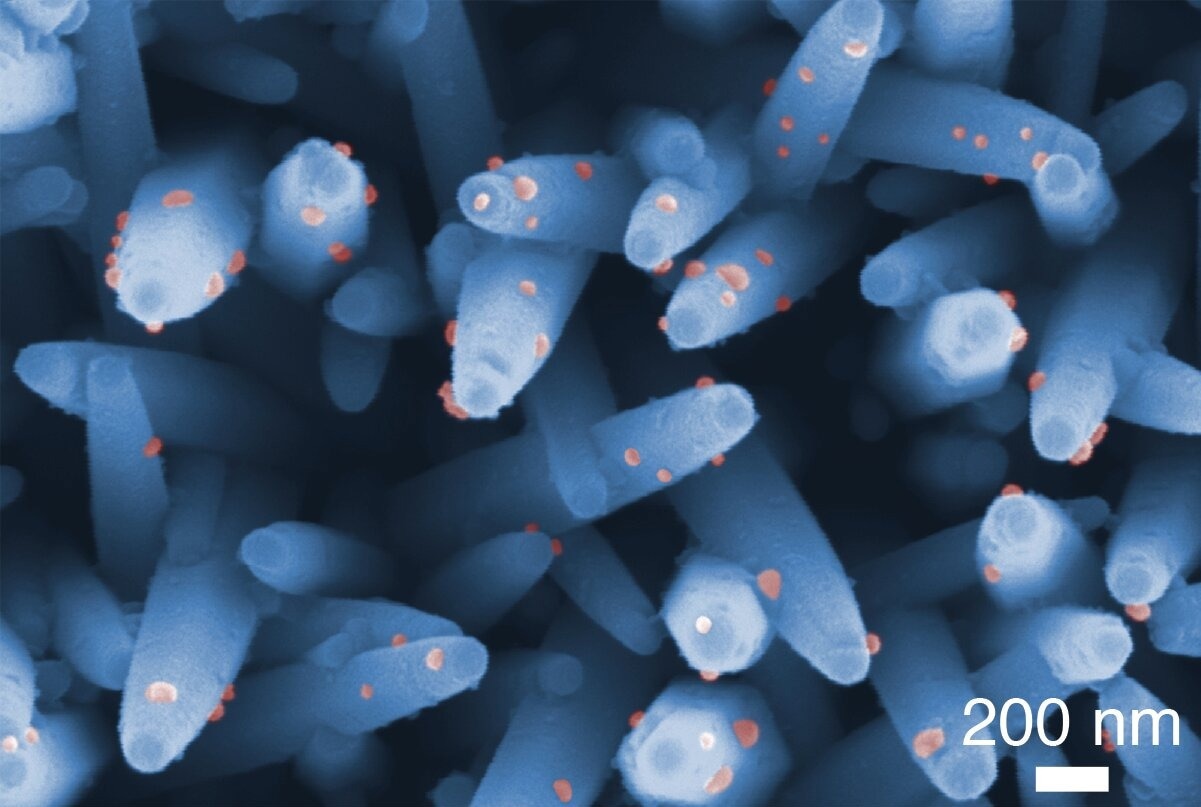A recent study conducted at Nagoya University has focussed on developing an all-in-one nanowire assay system that can capture and evaluate extracellular vesicles useful for early cancer diagnosis.

Microscopic image of nanowires. Credit: Dr Takao Yasui
Extracellular vesicles are promising biomarkers for the early detection of cancer. Different systems are available to capture and analyze extracellular vesicles, separately.
This research was led by Associate Professor Takao Yasui of Nagoya University’s Graduate School of Engineering and his colleague Professor Yoshinobu Baba, in collaboration with Nagoya University's Institute of Innovation for Future Society and the University of Tokyo. Scientists developed a novel analysis platform for capturing and detecting brain tumor extracellular vesicles based on nanowires at the bottom of a well plate.
Extracellular Vesicles - A Biomarker for Cancer Diagnosis
Extracellular vesicles are membrane vesicles whose diameter ranges between 30 nm and 2000 nm and contains proteins, nucleic acids, and bioactive lipids. These membrane vesicles are involved with intercellular communication and regulation of cell functions. Compared to normal cells, malignant cells (e.g., tumors) have higher extracellular vesicle secretion. Since extracellular vesicle analysis provides important information related to a disease, these are considered important biomarkers for chronic diseases, such as cancers.
Early detection of cancer improves clinical outcomes; however, this is not always possible because some types of cancer, such as brain cancer, remain asymptomatic for a prolonged period. A delayed diagnosis of a brain tumor substantially reduces the chance of the patient’s survival.
Extracellular Vesicles for Cancer Diagnosis
The new study explored the idea that analysis of brain tumor organoid-derived extracellular vesicles would enable the identification of these biomarkers for brain tumors.
Extracellular vesicles are firstly captured from biological samples using various conventional methods, such as ultracentrifugation/ differential centrifugation, immunoaffinity-based methods, polymer precipitation, filtration, aptamer-mediated sorting, and chromatography (size-based capture). After capture, these are analyzed using various immune assays, nanoplasmon-enhanced scattering assay, Western blotting after lysis treatment, and mass spectrometry, to gather important biological information.
Previously, the same team of researchers had developed a nanowire-based extracellular vesicle capture strategy from urine samples. Yasui explained why a urine sample is important. He said, “Urine tests are an effective, simple, and non-invasive method because the urine contains many informative biomolecules that can be traced back to identify the disease.".
The zinc oxide (ZnO) nanowire system can capture extracellular vesicles based on the surface charge. This method is beneficial due to its ability to determine large numbers of microRNAs (miRNAs), simple operational process, high extracellular vesicles yield, and rapid output.
All-In-One Nanowire Assay System for Capturing and Extracellular Vesicle Analysis
To develop an all-in-one nanowire assay system, a nanowire-based capture system was combined with a conventional well plate assay for extracellular vesicle analysis. Nanowire substrates were developed by synthesizing ZnO nanowires on fused silica substrates using the hydrothermal method.
Since, compared to a weaker positively charged surface, a stronger positively charged surface can increase capture efficiency, aluminum oxide (Al2O3) was deposited on the ZnO nanowires via the atomic layer deposition (ALD) method, which developed a core-shell structure. This nanowire substrate was placed on a 24-well plate. Field emission scanning electron microscopy (FESEM) images revealed the diameter of the nanowire to be 111 nm, the height to be 1.81 μm, and the average density to be 25 nanowires/μm2.
The newly developed ZnO/Al2O3 nanowires system can capture extracellular vesicles and subsequently analyze them, i.e., detection of their membrane proteins. Initially, extracellular vesicles in urine, those in phosphate-buffered saline (PBS) and organoid-derived extracellular vesicles in culture media were incubated in the device such that extracellular vesicles could be captured on the nanowire. Subsequently, the vesicles were analyzed based on the antibody fluorescence detection method and the captured extracellular vesicle concentration in the nanowire assay system was measured.
Application of All-In-One Nanowire Assay System and Future Outlook
The newly developed all-in-one nanowire assay system was able to identify specific types of extracellular vesicle membrane proteins, i.e., CD31, CD63, and EGFRvIII, from the urine samples of patients with brain tumors. Detection of these marker proteins will indicate the presence of tumors in patients, even at the asymptomatic stage.
Yasui stated that, in the future, “users can run samples through our assay and change the detection part, by selectively modifying it to detect specific membrane proteins or miRNAs inside EVs to detect other types of cancer.” At present, the authors are focussed on advancing the device such that it can determine the expression levels of specific membrane proteins in urinary extracellular vesicles, which would enable early diagnosis of different types of cancer.
The current nanowire assay system provides a unique opportunity to create a powerful tool for the early diagnosis of cancer with high precision and accuracy.
Reference
Chattrairat, K. et al. (2023) All-in-One Nanowire Assay System for Capture and Analysis of Extracellular Vesicles from an ex Vivo Brain Tumor Model. ACS Nano. https://doi.org/10.1021/acsnano.2c08526
Disclaimer: The views expressed here are those of the author expressed in their private capacity and do not necessarily represent the views of AZoM.com Limited T/A AZoNetwork the owner and operator of this website. This disclaimer forms part of the Terms and conditions of use of this website.